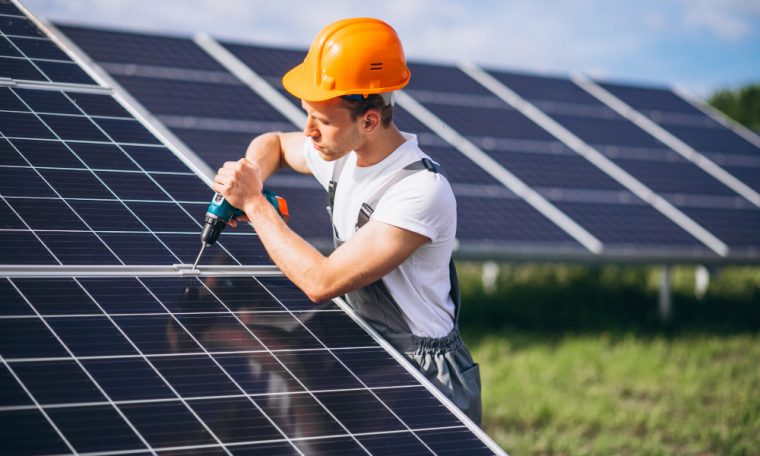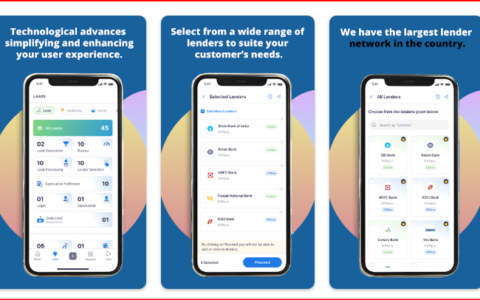
Renewable energy sources must now be adopted in today’s ecologically conscious world. Solar energy is one of these that stands out as a sustainable and getting more and more popular choice. Specifically, solar panels are transforming the way we use the sun to generate energy. In addition to making the world a greener place, its installation has many advantages for both businesses and homeowners.
Getting to Know Solar Panels
Solar panels, also known as photovoltaic (PV) panels, work by harnessing solar radiation to generate electricity. These panels capture sunlight thanks to their many solar cells, which are mostly made of semiconductor materials like silicon. Sunlight strikes these cells and creates an electrical field that starts the current flow.
The resulting electrical output is adaptable, able to supply energy not only to homes but also to businesses and even large cities. Solar panels’ transformative power makes a wide range of uses possible and accelerates the long-term transition to greener, renewable energy sources.
Key Components of Solar Panel Systems
Solar Panels
These fundamental elements are what allow solar energy to be captured and converted into electrical power without any problems. Their primary function is to effectively capture solar radiation and start the process of conversion that produces electrical energy that may be used.
These fundamental elements serve as the main conduits, coordinating the complex dance between sunlight and electricity through their elaborate construction and specific design. This allows renewable energy to be harnessed for a variety of useful applications.
Inverter
The inverter is essential because it transforms solar-generated direct current (DC) electricity into alternating current (AC), which is more flexible and useful.
Serving as an essential middleman, the inverter converts the energy output from the panels into a more usable and adaptable electrical format, making it easier for homes, businesses, and the larger electrical grid to integrate it.
This transforming function makes sure that the electricity produced by solar panels is seamlessly compatible with regular appliances, allowing it to be used for a variety of applications and making the power supply system more sustainable and efficient.
Mounting Structure
By giving the panels vital support and thoughtful placement, the mounting framework plays a crucial part in the solar panel system. Ensuring the best direction and inclination to optimize solar exposure all day long is its main goal.
This structure makes sure the panels capture the maximum amount of sunlight and maximizes energy production by securing them in the optimal configuration.
In addition to increasing the solar panels’ efficiency, this careful alignment also makes a substantial contribution to the overall effectiveness and performance of the solar power system, which supports the continuous and dependable generation of renewable energy.
Batteries (Optional)
In a solar panel system, batteries are essential storage units that gather and hold excess energy produced during the longest hours of daylight. This energy that has been saved serves as a vital reserve that allows power to be supplied continuously at night or during times when there is less sunlight.
Through the utilization and retention of surplus electricity in these batteries, the system guarantees a dependable backup power supply, providing independence and durability even in situations where solar generation is restricted.
This feature not only increases the system’s dependability but also promotes self-sufficiency by providing constant access to clean energy regardless of variations in the amount of sunshine available. This results in a more reliable and sustainable energy source.
Solar Panel Installation Process
Site Assessment
In the first stage of installing solar panels, skilled experts perform a thorough evaluation of your property. This assessment is essential for determining your location’s solar potential because it considers a number of important variables.
The evaluation of the amount of sunlight your property receives throughout the day is termed a “sunlight exposure analysis,” crucial in determining the potential energy production of solar panels.
Examining the orientation of the roof helps determine where the panels should be installed to get the most sunshine exposure. Shading research also finds any possible obstacles that could reduce solar efficiency.
This assessment, which carefully weighs all of these factors, provides the foundation for creating a specialized and effective solar panel system that will optimize energy production and fit your property’s particular features to the letter.
Design and Permitting
A custom solar panel system design that maximizes solar potential is created after a comprehensive examination of the property. The complex alignment of this custom design takes into account the particular features of your land, taking into account elements such as roof arrangement, sunlight exposure, and potential shadowing.
Important licenses from local authorities are carefully obtained in accordance with regulations before installation. These licenses enable a smooth and lawful installation process by ensuring compliance with building and zoning standards.
This methodical strategy emphasizes efficiency and regulatory compliance while simultaneously optimizing the system’s performance and facilitating a seamless and legal transition toward your property’s use of renewable solar energy.
Installation
Specialized mounting structures are skillfully fastened to your property throughout the installation process, providing the solar panels with a strong basis. Skilled experts carefully install the panels, placing them in the ideal locations to maximize solar exposure in accordance with the unique design.
Great care and attention to detail characterize the process of making wiring connections between the panels, the inverter, and the electrical system. This phase strictly adheres to industry best practices and safety requirements, prioritizing both efficiency and safety.
Placing your faith in the hands of knowledgeable experts during this stage will guarantee a safe and smooth integration of solar energy into your house in addition to the system operating at peak efficiency.
Connection to the Grid
Installers carefully attach specialized mounting structures to your property throughout the installation process. Providing the solar panels with a strong base. Expert installers place the panels with precision, arranging them in a way that maximizes their exposure to sunshine and aligns with the unique design.
The wiring connecting the panels to the inverter and electrical system is crafted with meticulous attention to detail. This phase follows industry best practices and safety regulations, with a strict emphasis on efficiency and safety.
Solar energy integration into your house will be safe and seamless if you leave this part to knowledgeable professionals. This will also ensure that the system operates at its best.
Benefits of Solar Panel Installation
Cost Savings
Installing solar panels can result in a significant decrease in electricity costs over time because they produce free, sustainable energy. Without depending on conventional utility sources, solar panels generate electricity by utilizing the sun’s limitless and plentiful energy.
By offsetting the need to draw heavily from the grid, this self-generated power reduces the requirement for purchased electricity. Consequently, there are large electricity cost savings for both homes and companies, which adds to the long-term financial gains. By lowering carbon footprints and promoting sustainability, this switch to renewable energy creates a win-win situation for the environment and the economy. It also lowers recurring costs.
Environmental Impact
Installing solar power systems makes it possible to reduce dependency on fossil fuels and, consequently, the carbon footprint that goes along with it. These systems provide power without burning fossil fuels, which are the main source of greenhouse gas emissions, by utilizing the sun’s clean, renewable energy.
Switching to solar energy largely reduces hazardous emissions. It diminishes the need for conventional energy sources like coal and natural gas. As a result, there is a significant reduction in the amount of carbon dioxide and other pollutants discharged into the atmosphere. This thoughtful move to renewable energy is in line with international efforts to tackle climate change. This will help create a more sustainable and environmentally friendly future.
Energy Independence
Installing solar panels offers a defense against changes in energy prices and power interruptions. Making the energy solution more reliable and steady. Solar panels shield customers from erratic price increases in the energy market by producing electricity locally. Reducing reliance on outside energy sources.
Because of its independence from the grid. There is a safety net that keeps the energy supply steady and predictable. Even in the event of outages or disturbances to the system. With solar panels installed, homes and businesses may continue to run efficiently and enjoy a steady supply of electricity. Which promotes dependability and security.
This independence from outside influences gives communities and individuals a stronger sense of urgency. It also provides a dependable energy substitute that is less vulnerable to the fluctuations of the wider energy market.
Increased Property Value
In the real estate market, homes with integrated solar systems frequently attract higher resale values. The enticing attributes that these installations present to potential purchasers are what make them appealing. The home becomes more financially viable with the installation of solar panels. Which offer lower energy prices and long-term savings on electricity bills.
Furthermore, the expanding appeal of solar-powered homes is driven by the growing emphasis on sustainability and eco-conscious living. Properties with solar panels are more appealing and marketable. Since buyers understand the long-term financial savings and environmental advantages of solar energy.
Maintenance and Care
Monthly maintenance is required to ensure that solar panels operate at their best and last as long as possible. Which involves a number of important chores. It is crucial to clean the panels since a buildup of dirt, dust, or debris. Because it might prevent sunlight from reaching the panels. Frequent inspections are necessary to spot possible damage, including wear or cracks, and to act quickly to stop efficiency losses. Ensuring correct wiring and connections ensures that electricity flows through the system without interruption.
A lot of installers include thorough maintenance services in their installation packages. These services include regular maintenance, cleaning, and evaluations of the system to guarantee reliable operation.
Key Takeaway
Installing solar panels can save money and protect the environment in the long run. It’s a big step toward sustainability. Both individuals and businesses can make informed decisions about switching to solar energy. When they are aware of the installation procedure and its accompanying benefits. Which helps to create a more sustainable and clean future.



